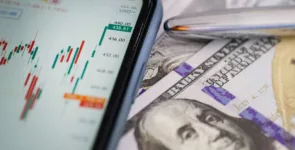Intel is swimming against the tide by working to impressively increase fabrication capacity and go into the foundry business. Back when I entered the tech market, Intel’s moves would have been an easy decision because companies operated strategically, and boards were fully supportive of sacrificing quarterly returns for long-term competitive advantage. But, over the last couple of decades, companies have populated boards with financial types who are more interested in quarterly returns and not that into long-term strategic investments.
The irony here is that Intel’s strategy to increase manufacturing capacity should not only make Intel stronger but dramatically improve the U.S.’s ability to compete on a global scale, avoid the supply problems that we had during the pandemic, and assure U.S. technology leadership, at least when it comes to chip manufacturing and related products.
This suggests that, if the U.S. wants to retain technology leadership, finding a way to better support key industries making strategic investments in their future (even when those advancements adversely affect current financial performance) is critical to assuring U.S. tech business success and dominance. The Chips Act is a good start, but more needs to be done to shift these industries to more strategic efforts in order to assure their long-term survival as U.S. assets.
NVIDIA and the Critical Need to Support Strategic Investments
NVIDIA is another company that has been investing strategically. Its AI efforts go back to the beginning of this century, but the massive benefits of those efforts mostly just hit this year as NVIDIA garnered a massive valuation and passed its competitors like they were standing still.
But while this move looked sudden and surprising, it was the long-term investment and commitment by its CEO, Jensen Huang that made it all possible.
Even Huang said that NVIDIA’s investments in AI so early were “insane” given the long time it would take to gain the benefits, but now that those benefits have arrived, instead of appearing insane, Huang is now the CEO of the most powerful AI company currently in the market.
Intel’s Short-Term Response
Intel is changing its reporting structure to better separate sales successes from its massive investments in fab and foundry manufacturing sites. This reporting change should help investors see what Intel’s real performance is without the distraction of Intel’s strategic investments in manufacturing.
This should take some of the interim heat off Intel’s leadership as the company restructures for a more powerful manufacturing future. This is a marketing response to what is a perception problem and reflects a good match of the tool and the problem (the tool being marketing and the problem being one of a perception of Intel’s performance due to the massive investment in fabs and foundries) that doesn’t match Intel’s actual performance.
Intel’s Strategic Weakness
After Dennis Carter, Andy Grove’s CMO, showcased just how to market an ingredient brand well, Intel seemed to lose its marketing capabilities. Those who immediately followed Carter didn’t seem to understand why he had been so successful and dismantled or weakened successful efforts like the Bunny People and Intel Inside over time. And the office of the CMO became a revolving door that seemed to favor those unwilling to take the critical risks that Carter took for fear that they’d get fired. Like most every tech company, executives who don’t have marketing chops feel they are more expert in marketing than Intel’s CMO.
To make this effort work, Intel needs not only a CMO who can recreate some of Dennis Carter’s successes but enjoys the same level of CEO support that Carter enjoyed from Andy Grove. I think Pat Gelsinger, Intel’s current CEO, should understand this, but I don’t see Intel’s marketing effort yet getting the support, budget or freedom to address what is currently more of an image problem than a performance problem at Intel.
Wrapping Up:
Intel is swimming upstream as it makes massive capital expenses to not only improve its own manufacturing capacity and parts delivery reliability, but also to help assure the U.S.’s continued dominance of the technology business. Intel’s moves to change reporting directly address this perception problem and should help it survive until the strategic advantage of this new manufacturing capability results in financial success.
However, Intel also needs to significantly strengthen marketing now by strengthening, protecting and adequately funding marketing so that it can do what needs to be done to restore Intel’s image to what it was under Andy Grove. There is no one in the world that has a stronger skill set to do this than Pat Gelsinger, but he has yet to prioritize this effort to assure Intel’s image matches or exceeds Intel’s reality.







